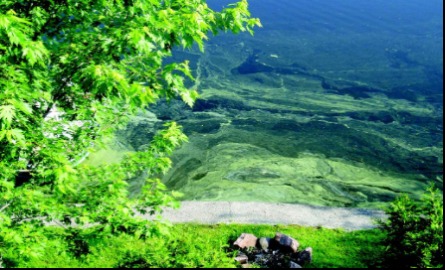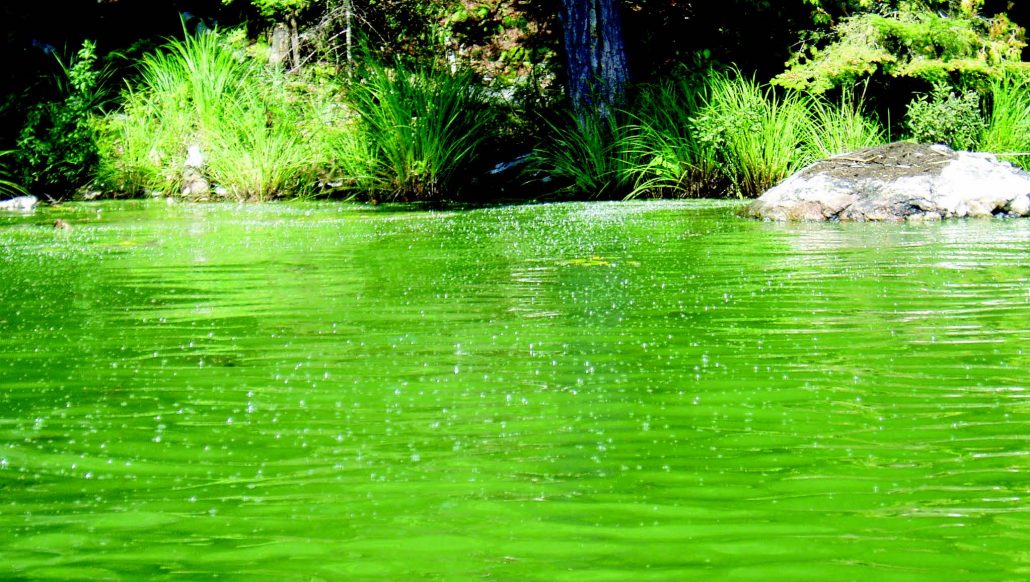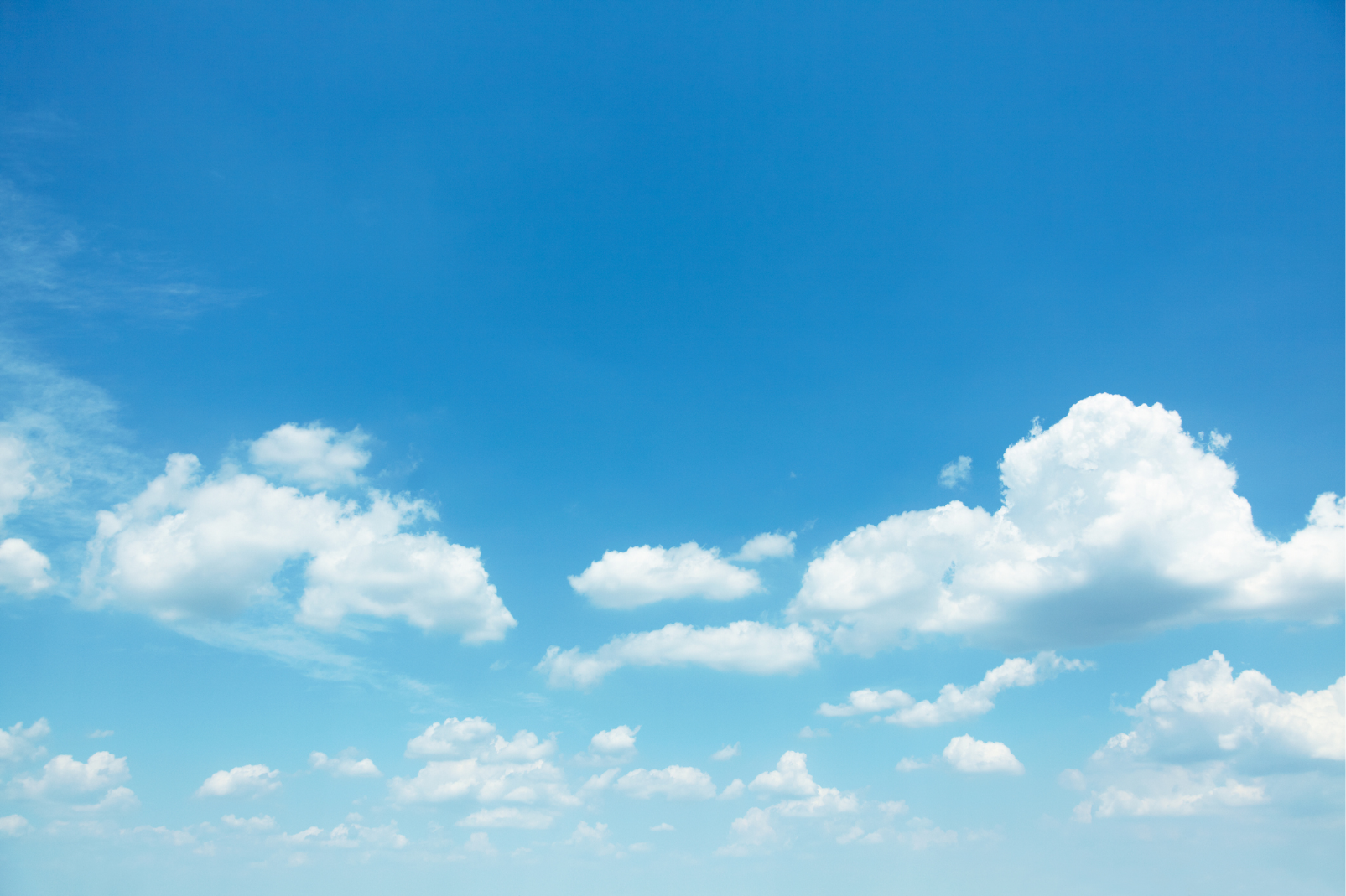When the conditions are right, toxic blue-green algae can be present in water bodies surrounding the City of Kenora. Unless you receive a notice from the City of Kenora or the Northwestern Health Unit, the presence of blue-green algae does not affect the municipal drinking water supply.
What blue-green algae looks like
Algal blooms are solid-looking clumps that look blueish-green, or like green pea soup or turquoise paint.

Colonies of microscopic blue-green algae appear on a lake during a bloom. Blooms occur mostly during late summer and early fall.
Be cautious
- If you suspect a blue-green algal bloom, assume toxins are present, and call the Spills Action Centre at 1-800-268-6060.
- Avoid using the water
- Restrict pet and livestock access to the water
- Avoid activities that increase exposure to toxins during algal blooms;
- Contact the Northwestern Health Unit for information and follow their advice.
Prevent growth of blue-green algae
- use phosphate-free detergents, personal care and household cleaning products
- avoid using fertilizers on lawns, especially fertilizers that contain phosphorus
- maintain a natural shoreline on lake and riverfront properties
- reduce agricultural runoff by planting or maintaining vegetation along waterways and minimize fertilizer use, and
- check septic systems to ensure they do not leak into the water source
What are blue-green algae? |
|
Cyanobacteria, commonly called blue-green algae, are primitive microscopic organisms that have inhabited the earth for over 2 billion years. They are bacteria, but have features in common with algae. Although often blue-green (their scientific name cyanobacteria comes from the Greek word for blue), they can range in colour from olive-green to red. Blue-green algae occur naturally in a wide variety of environments including ponds, rivers, lakes and streams. |
What are blue-green algae blooms? |
|
Normally blue-green algae are not visible in the water, but when conditions are favourable, algal populations can rapidly increase to form a large mass or scum in the water called a bloom. Blooms most commonly occur during the warmer weather of late summer and early fall. |
What conditions favour algal growth? |
|
Blue-green algae thrive in areas where the water is shallow, slow moving and warm, but they may also be present in deeper, cooler water. One key factor affecting the growth of blue-green algae is the amount of available nutrients such as phosphorus and nitrogen. In Ontario water bodies, phosphorus tends to be the nutrient that controls how much algae can grow. |
How can blue-green algal blooms be reduced or prevented? |
|
Human activities can promote the growth of blue-green algae. For instance, agricultural, urban and stormwater runoff, effluent from sewage treatment plants and industry, and leaching from septic systems can elevate the levels of nutrients in water bodies, which can promote algae growth. Reducing or eliminating nutrient inputs from these sources is a proactive way to reduce the occurrence of blue‑green algal blooms. Take these simple steps to prevent the growth of blue-green algae:
|
How do I recognize a blue-green algal bloom? |
|
Dense blue-green algal blooms may make the water look like bluish-green or green pea soup or turquoise paint. Colonies of microscopic blue-green algae appear on a lake during a bloom. Blooms occur mostly during late summer and early fall. They may form solid-looking clumps. Fresh blooms often smell like newly mown grass; older blooms may smell like rotting garbage. |
What should I do if I encounter a bloom? |
|
Take a cautious approach with blue-green algal blooms. Although many varieties of blue-green algae are harmless, some can produce toxins that are harmful to the health of both humans and animals. These toxins are contained within the algal cell and are released to the water when the cell wall breaks, which can occur when the cell dies and decomposes or is damaged by abrasion, or by chemicals like bleach or algaecides. Higher levels of toxins may occur when blue-green algal cell numbers are high and concentrated in one area. As a precaution, regard any blue-green algal bloom as potentially toxic. |
Is it safe to swim in a water body where blue-green algal blooms occur? |
|
During an algal bloom, avoid activities such as swimming and bathing in water near the bloom to reduce the risk of exposure to algal toxins. Contact your local Health Unit swimming advisories as well as information on health risks associated with blue-green algal blooms. |
If I see a bloom and suspect it is blue-green algae, what immediate actions should I take? |
|
If you suspect a blue-green algal bloom:
|
Can blue-green algal blooms be treated in the water body? |
|
Treating blooms with herbicides, copper sulphate or other algaecides is not advised because these treatments may break open algal cells and release more toxins into the water. This characteristic makes treating algal blooms difficult. Prevention is the best way to control algal blooms. |
What are the potential health effects associated with blue-green algal toxins? |
|
The severity of symptoms and the level of risk to health depend on how you are exposed to blue-green algal toxins. Human health effects from contact with these toxins may include:
|
How much microcystin is allowable in drinking water under the Ontario drinking water quality standards? |
|
The Ontario Drinking Water Quality Standard for microcystin-LR (a common algal toxin) is a maximum acceptable concentration of 1.5 micrograms per litre, which is the same as 1.5 parts per billion. It is rare for treated water tests in Ontario to exceed this standard, but precautions should still be taken when a bloom occurs. |
Can I use my water if I know there is a bloom nearby? |
|
If you are connected to a municipal water supply system or other central water treatment and distribution system, you can continue to use the water normally unless notified otherwise by the system operator or the local health unit. Central treatment plants usually have filtration, chlorination, and other treatment systems that are capable of removing the algal cells and toxins. Drinking Water System Operators will monitor drinking water quality more frequently once a bloom is reported in the area of the intake. If you have your own well supply with a groundwater source (not including shore wells or infiltration galleries), or you receive trucked water in cisterns, you can also continue to use the water normally. If you get your water supply from your own surface water intake in the area of a bloom, you should consider an alternate source of drinking water for the duration of the bloom. Usually people won't drink water contaminated with blue-green algal blooms because of its unsightly pea soup appearance and foul smell. If you have your own surface water supply and are unsure about the safety of your drinking water during an algal bloom, use alternative water sources such as bottled, carted or tanked water. You can also call a water treatment service provider for help. However, sometimes specialized tests for algal toxins are needed to tell if your drinking water has been contaminated. Home treatment systems may not remove toxins and can get easily overwhelmed or clogged, so they should not be relied on. Do not boil the water, or manually treat the water with chlorine or other disinfectants, as this could increase the toxin levels. Contact your local Health Unit for more information. |

During an algal bloom such as this, avoid swimming and bathing in water near the bloom, to reduce the risk of exposure to algal toxins. Contact your local Health Unit for any health-related information.
Contact Us











